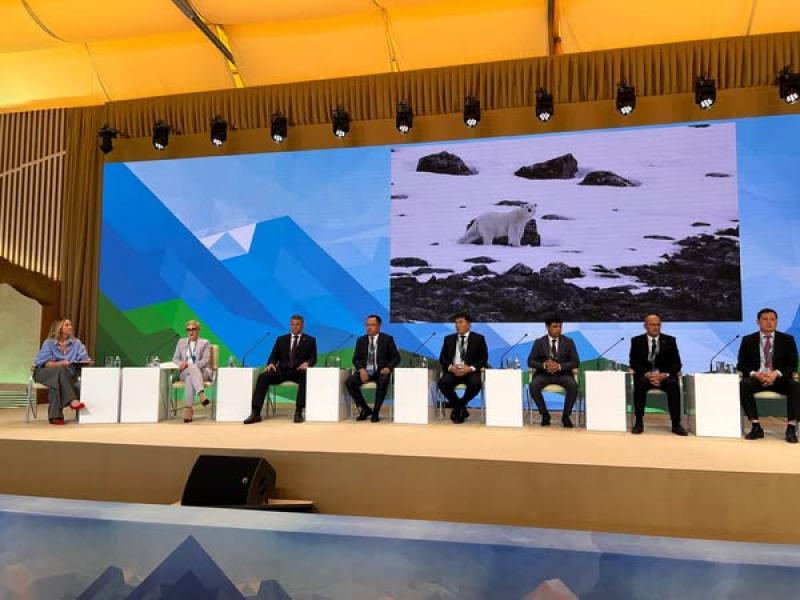Within the framework of the International Conference on Nature and Environmental Protection, held in the Altai Republic, Voskehat Grigoryan, Head of the Specially Protected Nature Areas and Biodiversity Policy Department at the Ministry of Environment of the RA, delivered a speech highlighting Armenia’s unique natural and ecotourism potential.
In her speech, Voskehat Grigoryan emphasized that Armenia is situated at the intersection of two major global bioregions, both recognized as global biodiversity hotspots. Despite its small area, Armenia is rich in flora and fauna, with around 3,800 plant species and over 17,000 animal species, many of which are rare or endemic. More than 13% of the country’s territory is designated as specially protected nature areas, comprising 3 state reserves, 4 national parks, 27 state sanctuaries, and 233 natural monuments.
In the domain of ecotourism, Armenia offers a wide range of opportunities, including hiking, birdwatching, mountain sports, water-based adventure tours, cycling routes, rural tourism, and eco-educational programs. Voskehat Grigoryan highlighted the Khosrov Forest and Shikahogh State Reserves, Dilijan National Park, and Lake Sevan as key ecotourism destinations.
In the area of biodiversity conservation, Armenia continues to implement targeted programs:
- Amendments to sectoral laws and secondary legislation aimed at strengthening biodiversity conservation;
- Monitoring of key animal species, including the Caucasian leopard, Bezoar goat, and Armenian mouflon;
- Implementation of restoration projects for red deer populations and Sevan trout stocks.
Voskehat Grigoryan also highlighted that the 17th Conference of the Parties to the Convention on Biological Diversity (COP17) will take place in Yerevan from October 18 to 30, 2026, and extended an invitation to partners to visit Armenia and collaborate on advancing global biodiversity strategies.







